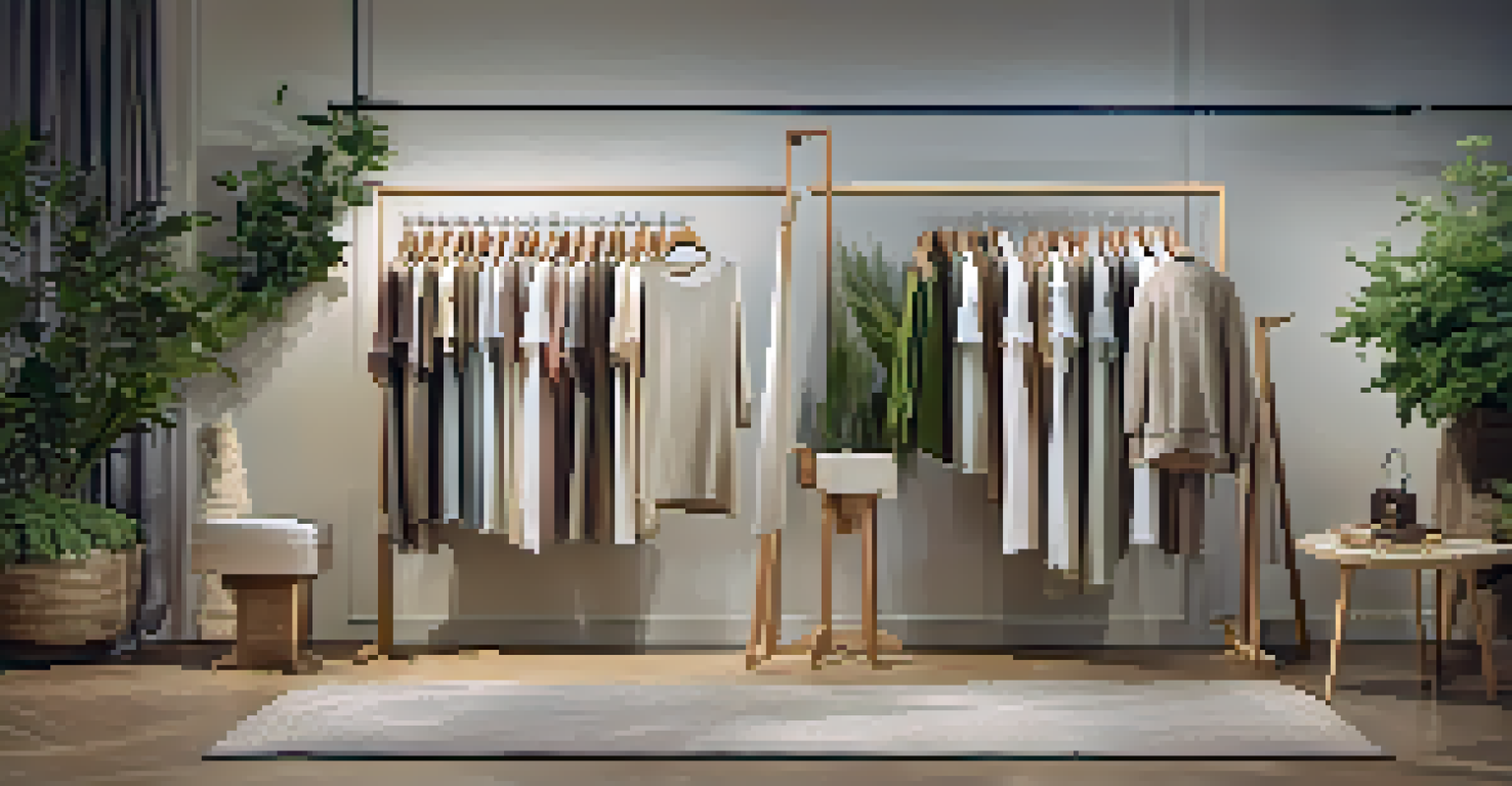The Future of Luxury Fashion Rentals: What's Next?

The Rise of Luxury Fashion Rentals: A Trend Redefined
Luxury fashion rentals have surged in popularity, transforming how we think about high-end clothing. No longer a niche market, these services appeal to eco-conscious consumers and those seeking variety without the hefty price tag. This shift reflects a broader desire for sustainability, as renting promotes reuse and reduces waste.
Fashion is the armor to survive the reality of everyday life.
As more individuals opt for rentals over purchases, brands are recognizing the opportunity to reach new audiences. Collaborations between luxury brands and rental platforms are becoming increasingly common, allowing consumers to access exclusive pieces. This partnership not only boosts visibility for luxury labels but also enhances their appeal to a younger demographic.
Moreover, the pandemic has accelerated this trend, as people rethink their shopping habits and prioritize experiences over ownership. The desire for flexibility and affordability has made rental options more attractive, paving the way for a future where renting is the norm rather than the exception.
Technology's Role in the Evolution of Fashion Rentals
Technology is at the forefront of transforming luxury fashion rentals, making the process more seamless and user-friendly. Advanced inventory management systems and AI-driven recommendations enhance the customer experience, allowing for personalized selections tailored to individual tastes. This not only streamlines the rental process but also fosters a more engaging shopping experience.

Virtual try-on technologies and augmented reality are also changing how consumers interact with fashion. Imagine browsing through an online rental platform and being able to virtually try on a designer gown before making a selection. This innovation reduces uncertainty and boosts confidence in choosing the perfect outfit.
Sustainability Drives Fashion Rentals
The rise in luxury fashion rentals is fueled by a growing consumer focus on sustainability and eco-conscious choices.
As technology continues to advance, we can expect even more interactive and immersive experiences in the rental space. Enhanced mobile apps and user-friendly interfaces will further simplify the rental process, making it accessible to a larger audience eager to embrace luxury without commitment.
Sustainability: The Heart of Luxury Rentals
Sustainability has become a key driver in the luxury fashion rental space, resonating with environmentally conscious consumers. Renting instead of buying contributes to a circular economy, reducing the demand for new production and lowering carbon footprints. This aligns with a growing awareness of environmental issues among consumers, particularly younger generations.
Sustainability is no longer a trend, it's a responsibility.
Brands that prioritize sustainability in their rental offerings often see increased loyalty and engagement. For example, luxury labels that use eco-friendly materials or sustainable manufacturing processes appeal to consumers who value ethical practices. This commitment to sustainability not only enhances brand reputation but also attracts a dedicated base of customers.
As we move forward, the integration of sustainable practices will be crucial for the growth of luxury fashion rentals. Consumers are more likely to support brands that demonstrate a genuine commitment to the planet, making sustainability a key differentiator in the competitive landscape.
Consumer Behavior: Shifting Attitudes Towards Ownership
Today's consumers are increasingly valuing experiences over ownership, a trend that is reshaping the luxury fashion landscape. Many are seeking unique pieces for special occasions without the long-term commitment of purchasing. This shift in mindset has propelled the growth of fashion rental services, allowing users to access high-end clothing on a temporary basis.
Furthermore, the sharing economy has gained traction, influencing how people perceive ownership. Platforms that facilitate rentals foster a sense of community, where users can share their fashion finds. This collaborative approach not only enhances the experience but also encourages users to explore new styles and trends without the pressure of buying.
Technology Enhances Rental Experience
Advancements in technology, such as AI and virtual try-ons, are making luxury fashion rentals more engaging and user-friendly.
As attitudes towards ownership continue to evolve, we can expect luxury fashion rentals to become a staple in many wardrobes. This new perspective will likely drive further innovation in rental services, catering to a demographic that values flexibility and variety.
Future Trends: What to Expect in Luxury Rentals
As the luxury fashion rental market evolves, several trends are poised to shape its future. One significant trend is the personalization of rental experiences, where platforms leverage data analytics to curate selections based on individual preferences. This bespoke approach will enhance customer satisfaction and encourage repeat business.
Additionally, the emergence of niche rental services focusing on specific styles or occasions is gaining momentum. From bridal rentals to curated collections for special events, these specialized platforms cater to diverse consumer needs, broadening the appeal of luxury rentals. This trend allows brands to target specific demographics and create tailored marketing strategies.
Finally, we can anticipate an increase in collaborations between luxury brands and rental services, resulting in exclusive collections available only for rent. This strategy not only creates buzz but also drives consumer interest, as limited-time offerings encourage quick decisions and elevate the rental experience.
Challenges Facing the Luxury Fashion Rental Market
Despite its growth, the luxury fashion rental market faces several challenges that need addressing. One primary concern is the maintenance and care of high-end items, as rentals require meticulous handling to ensure quality. Brands and rental services must develop robust logistics and cleaning processes to maintain the integrity of their offerings.
Another challenge lies in consumer perception. Some individuals still view renting as an inferior option compared to ownership, associating it with lower quality. Overcoming this stigma is essential for the industry's growth, and brands must educate consumers about the value and benefits of rental services.
Shift Toward Experience Over Ownership
Consumers are increasingly valuing unique experiences and flexibility, leading to a greater demand for fashion rental services.
Lastly, competition within the market is intensifying, with new players entering the scene regularly. Established brands must innovate and differentiate themselves to capture consumer attention. This may involve enhancing their product offerings, optimizing the rental experience, or investing in marketing strategies that highlight their unique value propositions.
Conclusion: The Bright Future of Luxury Fashion Rentals
The future of luxury fashion rentals looks promising, driven by changing consumer preferences and technological advancements. As sustainability, personalization, and unique experiences take center stage, the industry is poised for significant growth. Rental services will increasingly cater to a diverse audience seeking flexibility and access to high-end fashion without the burden of ownership.
Moreover, the collaboration between luxury brands and rental platforms will continue to flourish, creating innovative solutions that benefit both parties. As consumers become more aware of their purchasing decisions, the demand for luxury rentals will only increase, paving the way for new opportunities.

In summary, the luxury fashion rental market is evolving rapidly, and those who adapt to these changes will thrive. Embracing sustainability, technology, and changing consumer behaviors will be essential for brands looking to succeed in this exciting new era of fashion.